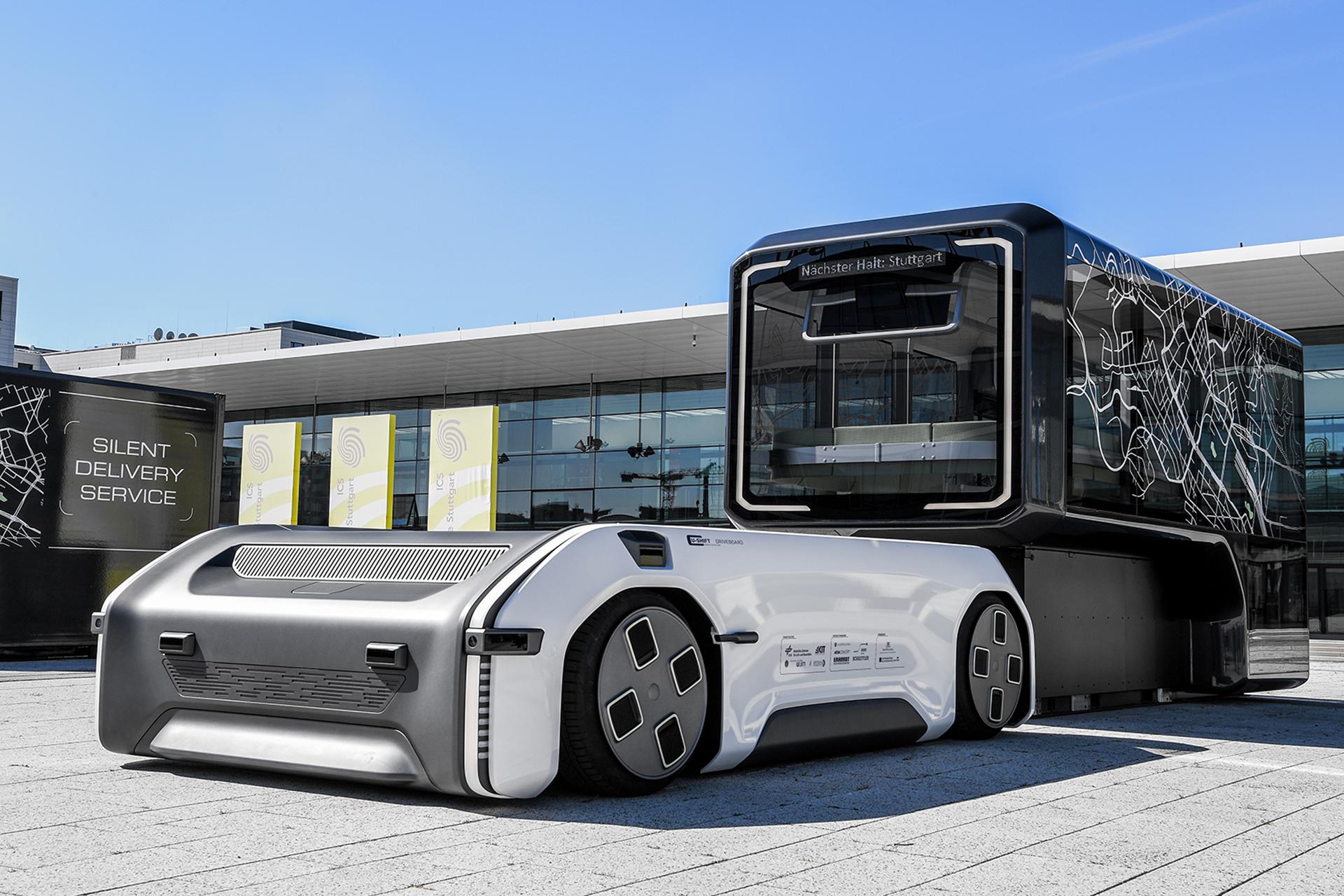
A self-propelled docking station to which different forms of vehicles can be connected such as a freight container or a passenger shuttle. In short, this is the new mobility concept of the German Aerospace Center DLR.
As the name “U-Shift” suggests, it has the shape of a U on wheels that can be used for a multitude of applications. “The vehicle can serve as an on-demand shuttle, a high-tech bus, a versatile distribution center for goods and parcels or as a vehicle for online trade,” says DLR.
A prototype was presented last Thursday at the conference “Strategiedialog Automobilwirtschaft Baden-Württemberg” conference in Stuttgart, Germany. Click here for a video. The state supports the project with a grant of €12 million.

Two parts
Here’s how it works. A U-shaped part the size of a small truck drives a container or a passenger shuttle around, for example, and then lifts it up. All the technology, such as the electric motor and the sensors for autonomous driving, has the shape of a U. According to DLR, one of the major advantages of the multifunctionality is that the U-Shift can be used optimally.

“We want to make tomorrow’s mobility more sustainable, more effective and more comfortable,” says the Minister of Economic Affairs Nicole Hoffmeister-Kraut of Baden-Württemberg in southern Germany. “Futuristic innovations such as the U-Shift vehicle concept can lead to completely new products and business models. For Baden-Württemberg, it is crucial that we support our small and medium-sized enterprises, particularly during the transformation process towards electromobility, to help them find a new role in future vehicle concepts and mobility solutions. The modular approach opens up excellent opportunities in this respect.”
According to Karsten Lemmer, DLR board member for Energy and Transport, the U-Shift can make an important contribution to the transformation of mobility. “Prototypes are extremely important, especially for the application of innovative concepts in the automotive industry or logistics and mobility service providers. They enable researchers and future users to experience and improve the mobile world of tomorrow in real life.”
Four years of testing and improvement
For the prototype, a passenger cabin with seven standard seats and one folding seat were developed, as well as a goods cabin that can accommodate eight trolleys or four so-called europallets measuring 800×1200×144 millimeters.
The prototype is now to be tested extensively to identify ways to improve it. In 2024 the next fully automatic prototype should be ready, with a maximum speed of 60 kilometers per hour.
In addition to DLR, several other institutions in southern Germany are contributing to the project, including the Research Institute of Automotive Engineering and Vehicle Engines, Stuttgart; the Institut für Fahrzeugsystemtechnik (Institute for Vehicle Systems Engineering), Karlsruhe; the Institute for Information Processing Technologies, part of the Karlsruhe Institute for Technology, and the Institute of Measurement, Control and Microtechnology of the University of Ulm.





